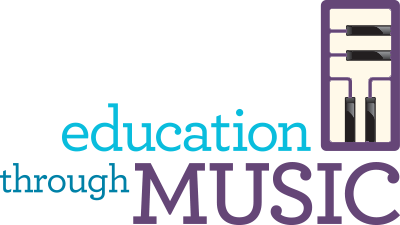Transforming Our Work
By Instructional Supervisor Beth Buehlmen
As an ETM Instructional Supervisor (IS), I’m responsible for guiding a cohort of music teachers as they navigate their music instruction, ensemble rehearsals, performances, and generally manage an NYC classroom.
Earlier this month, when NYC schools closed and announced a complete transition to distance learning, I thought to myself, “This is completely uncharted territory. I know this is going to be a challenge, but I am so ready for this. And so is my team.”
You see, my colleagues and I had been exploring online music education for a few weeks before schools closed, in anticipation of what became inevitable. We were determined to be able to continue to provide high-quality music education to as many of our 36,000 students as possible.
Preparation is Everything
Here’s a look back at how we prepared:

Sharing Resources: To begin with, ETM ISs curated and shared ETM-vetted digital and print materials with our teachers. We also shared helpful examples of distance learning created by non-ETM music teachers, which helped to illustrate how an online music class might look.
Adjusting to New Technology: Most schools are using the eLearning tool Google Classroom to provide instruction to students. As it happens, many ETM ISs and teachers had been using Google Classroom as a communication and collaboration tool, so it was fairly easy to convert fully.
Creating New Lessons: As ISs, we worked with each individual teacher to help them outline a few weeks of lessons for each of their classes. That included helping teachers think through reasonable expectations for their students, from technological savvy to homework capacity.
Challenges Abound
The road has been bumpy, though, and we’re still negotiating a number of challenges. Here are some of our biggest hurdles so far:

Access to Technology: Access to technology continues to be a limiting factor. While civic leaders and business are doing a lot to provide students with access to the technologies they need, many students still don’t have reliable access to the internet or a laptop or tablet they can use for school work.
Going Live versus Pre-recording: Another variable for our teachers was whether they can teach a live class, wherein their students are participating in real time, or if it makes more sense to post pre-recorded lessons that students can access and complete at their convenience. Three weeks into distance learning, many teachers have been able to teach “live” classes, but pre-recorded lessons are still instrumental in making sure that as many students as possible have access to the materials.
Serving ALL students: Another challenge for our teachers has been the sheer number of students they have to support. Our music teachers see anywhere from three to six different grade levels, in addition to teaching band, orchestra, and/or choir. That is a lot of students to manage!
The Opportunities are Endless
ETM’s transformation offers us some incredible opportunities, which I’m so excited to explore with my fellow educators.
 Professional Development: ETM provides teachers with over 100 hours of professional development (PD) as a matter of course. In these new circumstances, we will adapt our group PDs to be virtual, which means teachers will be able to return to them anytime they need to, increasing their impact. Converting PD into a digital reference also means that we will be able to share our best practices with communities outside of ETM, demonstrating our expertise as a thought leader and strengthening our position in the education space.
Professional Development: ETM provides teachers with over 100 hours of professional development (PD) as a matter of course. In these new circumstances, we will adapt our group PDs to be virtual, which means teachers will be able to return to them anytime they need to, increasing their impact. Converting PD into a digital reference also means that we will be able to share our best practices with communities outside of ETM, demonstrating our expertise as a thought leader and strengthening our position in the education space.
Building Community: What is truly exciting in this time of challenge is that teachers, organizations, and online communities are coming together to support and help each other. There has been so much information and content shared by our colleagues at other organizations, all very selflessly.
Maximizing Online Learning’s Benefits: ETM’s unique model is responsive, which means that–by design–our teachers tailor their curricula to the needs and interests of each school, and each student. Distance learning actually allows students and their parents to have increased access to their music teachers, via email or private online conferences. This has given teachers the opportunity to zero in on each student individually to offer feedback and build relationships.
Increasing Visibility for Music Education: Moving learning online also provides increased visibility for music education; parents who haven’t necessarily seen inside their child’s music class will have the opportunity to join a class, and see for themselves the impact music has on their child.
Looking Forward
Over the past month, we’ve seen countless examples of music bringing people together. At ETM, it is definitely bringing us together, and helping to bring us closer to the students we teach. I’m truly thrilled to be part of this critical transformation. And while the circumstances are harrowing, my colleagues and I are more committed than ever to providing high-quality music education to our students, as well as reminding our communities that music belongs in the classroom, virtual or otherwise.




